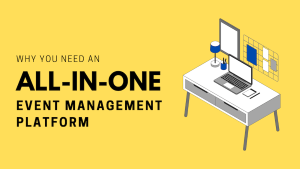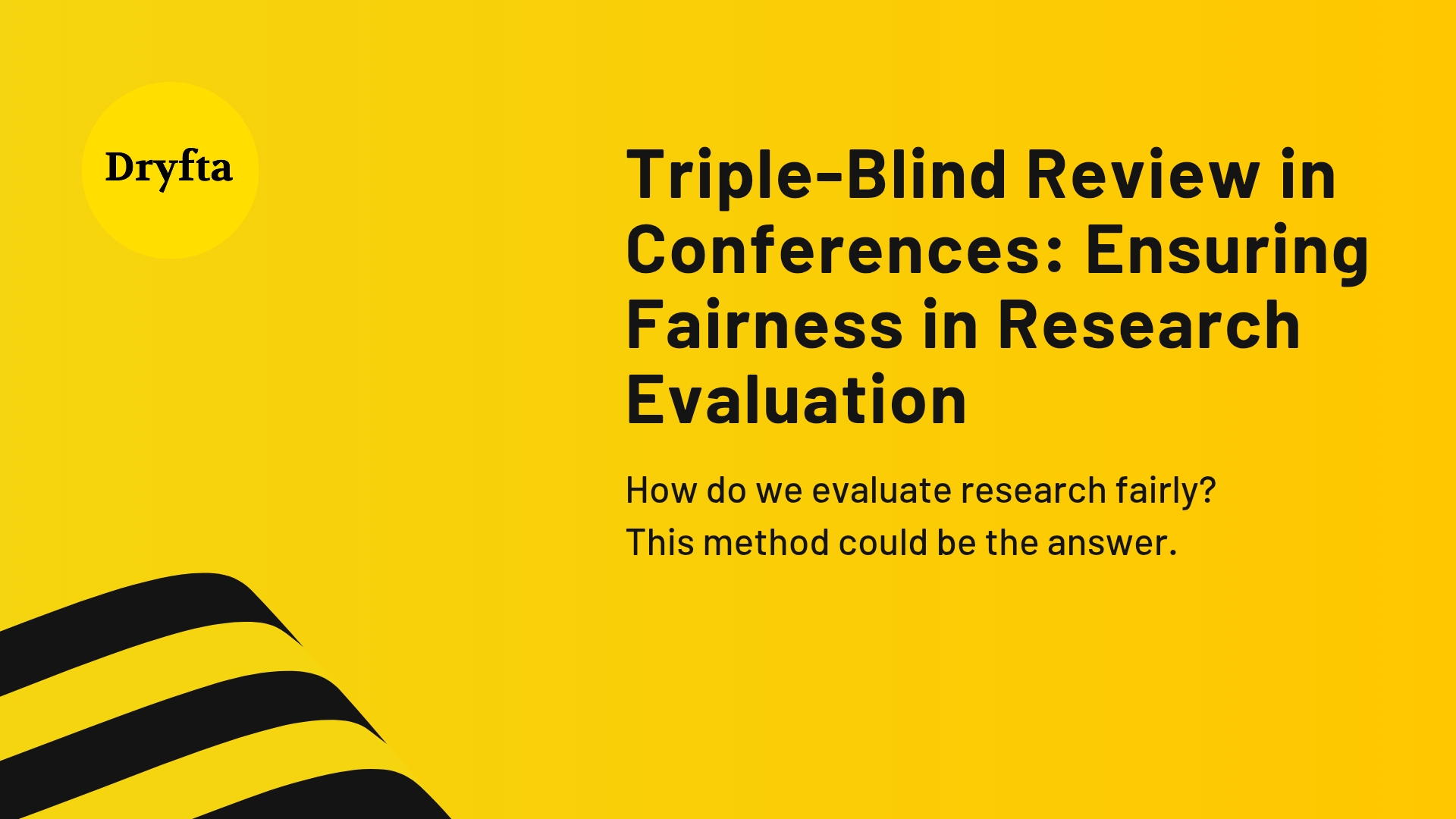Triple-Blind Review in Conferences to Ensure Fairness in Research
Peer review is the backbone of academic research, but it’s far from perfect. Even the most conscientious reviewers carry subconscious biases that can influence evaluations. Established researchers or prestigious institutions often receive the benefit of the doubt, while early-career academics struggle to get fair consideration.
For decades, these biases have quietly shaped conference acceptance rates, funding decisions, and even career trajectories. Acknowledging the problem is uncomfortable, but unavoidable. That’s where triple-blind review comes in: a system designed to remove identity from the evaluation process entirely, so papers are judged purely on their merit.
In this article, we’ll explore why triple-blind review matters, how it works, and the role that platforms like Dryfta play in making fair evaluation possible at scale.
Why Triple-Blind Review Came Into the Picture
Most scholars know the standard formats:
- Single-blind: reviewers know the authors, but authors don’t know reviewers.
- Double-blind: both sides are hidden from each other.
Triple-blind review goes a step further. Here, even conference organizers and program chairs don’t know who the authors are during the initial phases. It might sound extreme, but the idea is simple: strip away every possible identity marker so that papers are judged solely on their content.
This system didn’t just appear overnight. It grew out of years of evidence showing how biases whether institutional, gender-based, racial, even geographic, shape acceptance rates. When you realize that career trajectories, grant approvals, and even the broader direction of science hinge on these decisions, the stakes suddenly feel enormous.
The Biases Nobody Wants to Talk About
Here’s the uncomfortable truth: reviewers are human, and humans carry bias. A paper stamped with “Harvard” or “Stanford” often gets a warmer reception than an equally strong submission from a smaller university. The prestige effect is real, and studies have repeatedly shown it.
Gender adds another wrinkle. Research has documented how papers with female-sounding names tend to receive harsher critiques. Comments about writing style, confidence in methodology pop up in ways that male authors rarely face. Add race, ethnicity, and geographic background, and the pattern becomes painfully clear: some voices consistently struggle to break through the door, not because of weaker ideas, but because of invisible hurdles.
And then there’s reputation bias. If a big-name researcher submits a mediocre paper, their track record often cushions the blow. Meanwhile, a groundbreaking submission from a fresh PhD student can be brushed aside because nobody knows them yet. That cycle makes it harder for new voices to break through, even when they’re doing innovative work.
Going Digital Changed the Game
The internet was supposed to fix everything. But in the beginning, digital publishing just mirrored print. Journals were the same, only now in PDF. The real shift happened later, when digital tools enabled new possibilities: interactive charts, multimedia data, preprint servers, open access debates.
This digital turn also set the stage for rethinking review processes. If technology can transform publishing, why not peer review? That’s where platforms began experimenting with workflows that could support deeper anonymity, eventually leading to workable triple-blind systems.
How Triple-Blind Review Actually Works
The mechanics go beyond just removing the author’s name. Authors have to scrub acknowledgments, funding sources, even self-citations. Even something as small as mentioning earlier studies has to be rewritten in neutral terms like -“Previous work by the research team”. It’s a painstaking process, and honestly, pretty frustrating.
On the backend, the abstract submission platforms have stepped up. Modern systems can scan submissions for potentially identifying info, manage anonymous communication between reviewers and authors, and separate metadata from content so organizers can’t peek. Reviewers then focus only on the paper’s methodology, clarity, and contribution, not the name at the top.
Interestingly, program committee discussions under this model shift noticeably. Instead of debating who wrote the paper, they dive straight into the topic. The tone becomes more about substance, less about reputation.
Why It Matters
The benefits are clear. A PhD student from a small university has the same shot at acceptance as a senior scholar from MIT. Researchers from developing countries get a fairer hearing. Women and underrepresented minorities find better representation in accepted programs.
Something else happens too: reviews get sharper. Without reputational shortcuts, reviewers must engage deeply with the text. Authors report receiving more thoughtful, constructive feedback. Even reviewers feel freer to be honest, since they’re not worrying about offending a well-known colleague or competitor.
And then there’s the creative upside. Without the safety net of reputation, big names can’t coast, and newcomers can shine. That balance often produces more diverse and exciting conference lineups.
The Challenges
Triple-blind review isn’t a magic wand. Total anonymity can be almost impossible in niche fields where everyone knows who works on what dataset. Reviewers can sometimes guess the author anyway.
Smaller conferences face another hurdle: cost and complexity. Many existing management systems weren’t designed for such workflows, and switching platforms or training staff takes time and money. Authors also face extra work, as removing identifying information without making the paper confusing is difficult.
Platforms That Make It Possible
This is where technology partners come in. Abstract Submission Platforms like Dryfta now offer advanced workflows built with triple-blind in mind. Think automated scanning for identifying information, anonymous reviewer-author communication channels, and flexible settings that organizers can tweak based on their discipline’s needs.
Dryfta even goes further with analytics that help organizers measure whether the system is actually reducing bias. That kind of transparency is crucial if conferences want to prove they’re serious about fairness.
The Road Forward
Will triple-blind review dominate every field? Probably not. Some areas will always struggle to hide identities. But the trend is clear: academia is no longer willing to pretend bias doesn’t exist.
What matters is that conferences are experimenting, refining, and learning. Over time, best practices will emerge. New tools, even AI-based anonymization, may make the process smoother. And maybe, just maybe, peer review will become less about -who you are and more about- what you’ve done.
Triple-blind review isn’t perfect, but it’s progress. And in a system that decides careers and shapes the future of knowledge, progress is worth fighting for.





